Buried Sexism: One Woman’s Experience Working at Mount Rainier
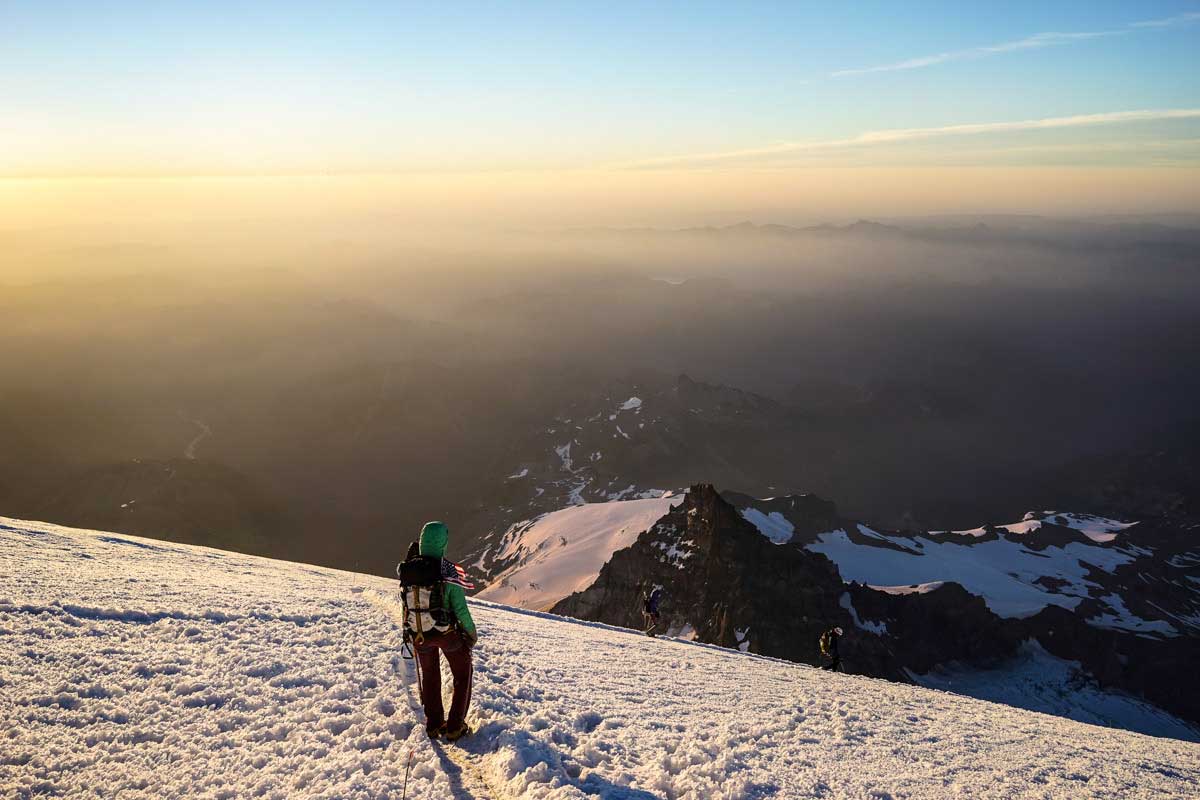
Buried Sexism: One Woman’s Experience Working At Mount Rainier National Park
Words and Photos by Lindsey Elise
“Now, I want to tell you something, and I don’t want you to think of it as a bad thing when I say it,” my boss, Dennis, told me during a performance review. “Okay,” I said suspiciously, because really, anything that is framed as “not a bad thing” is probably a bad thing. Dennis pressed on, “When I called your references back in March every single one of them described you as intense.”
Intense. I sat there for a second letting the word sink in.
“I don’t think they meant it as a negative quality, and I’ve seen that intensity in you and I think it can be a really good thing.”
I continued to be silent, thinking it through. The word wasn’t immediately off-putting to me and I knew it was true, I am intense, but it also isn’t an overwhelmingly positive compliment. Words like passionate, confident, powerful, determined would have been much more inspiring qualifiers. Intense seemed to suggest that I am overwhelming, aggressive, intimidating, insensitive.
I looked at him and asked, “Do you think they would have used the same descriptor if I was a man?” He just smiled sadly and sat back in his chair.
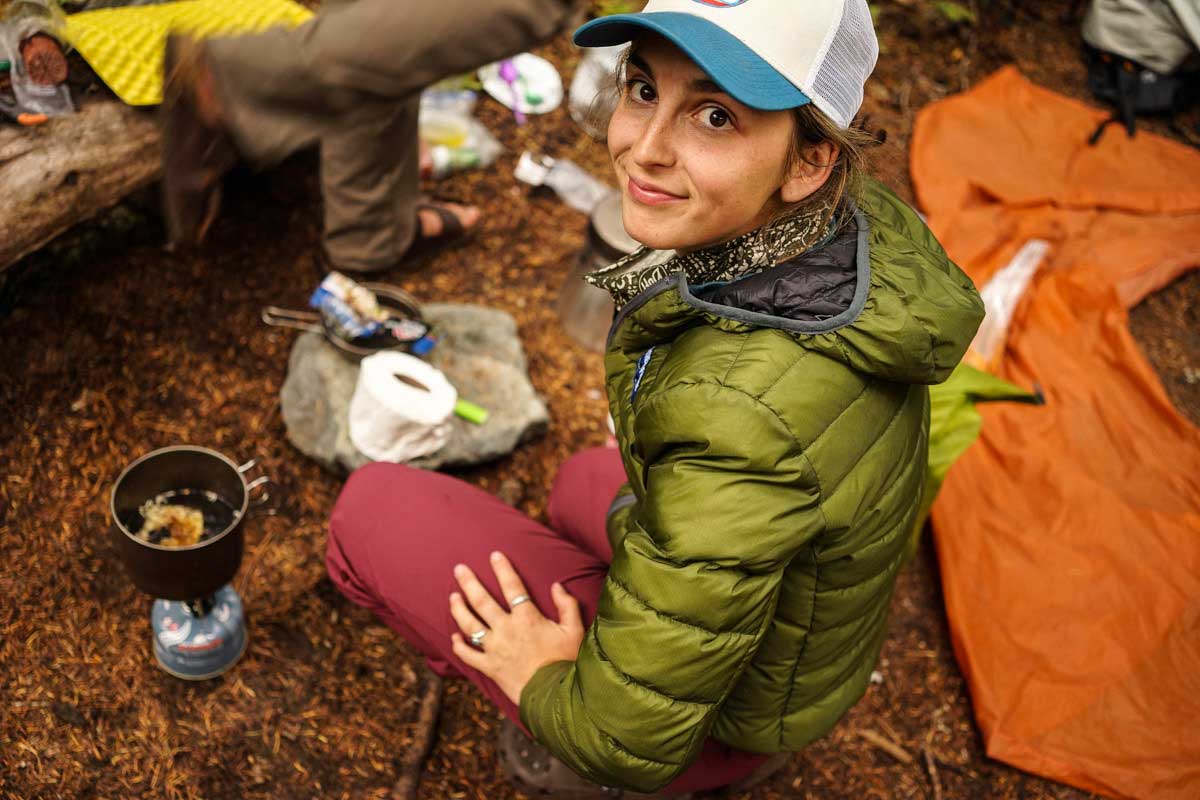
This conversation took place last summer, near the end of my season with the King County Backcountry Trails Crew out of Seattle, and just before I left for a three month emergency hire position at Mount Rainier National Park. Mount Rainier was (and still is) the mountain in my life. I had climbed it in July and gotten engaged on the summit. Then, in August, I walked around it on the 98 mile long Wonderland Trail. Immediately after finishing that hike I started the emergency hire position.
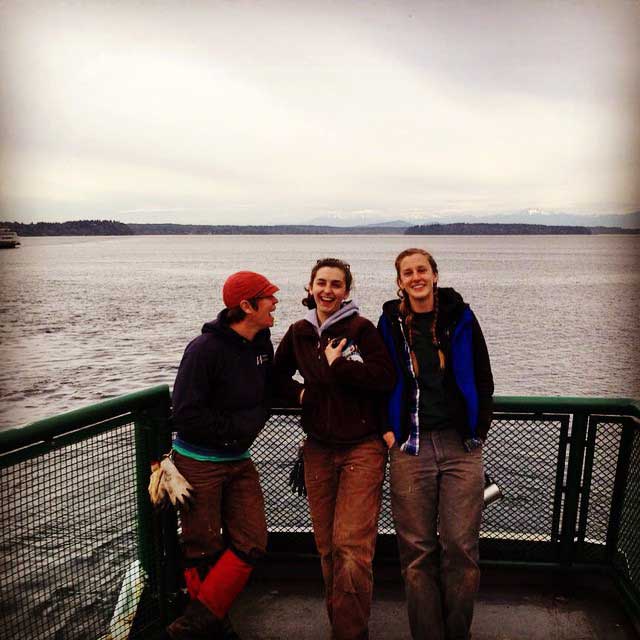 Working at the park seemed the perfect way to end my Mount Rainier filled summer and I was excited to be helping improve access to its flanks for all the people who desire nearness and adventure. I wouldn’t be going alone, either. My King County co-worker, Claire, who had originally heard about the positions, would be carpooling to Carbon River with me every week. We were tasked with helping finish a forty foot, three stringer bridge on the Carbon River Road. The plan was for the two of us to join a supervisor and finish the massive bridge in just two months. Also working out of the Carbon River Ranger Station was another crew of three, two guys and one girl, who did more general trail maintenance. On the first day of work, when Claire and I stepped into the office, I was delighted to see another woman. That made three of us and three of them, what a progressive place the Park Service was! It didn’t take long, though, for one of our supervisors to break the spell. “What a crazy year this is,” he told us, “we haven’t had a woman on the crew for probably ten years, and now there are three of you!” And thus began my time working for the Park Service.
Working at the park seemed the perfect way to end my Mount Rainier filled summer and I was excited to be helping improve access to its flanks for all the people who desire nearness and adventure. I wouldn’t be going alone, either. My King County co-worker, Claire, who had originally heard about the positions, would be carpooling to Carbon River with me every week. We were tasked with helping finish a forty foot, three stringer bridge on the Carbon River Road. The plan was for the two of us to join a supervisor and finish the massive bridge in just two months. Also working out of the Carbon River Ranger Station was another crew of three, two guys and one girl, who did more general trail maintenance. On the first day of work, when Claire and I stepped into the office, I was delighted to see another woman. That made three of us and three of them, what a progressive place the Park Service was! It didn’t take long, though, for one of our supervisors to break the spell. “What a crazy year this is,” he told us, “we haven’t had a woman on the crew for probably ten years, and now there are three of you!” And thus began my time working for the Park Service.
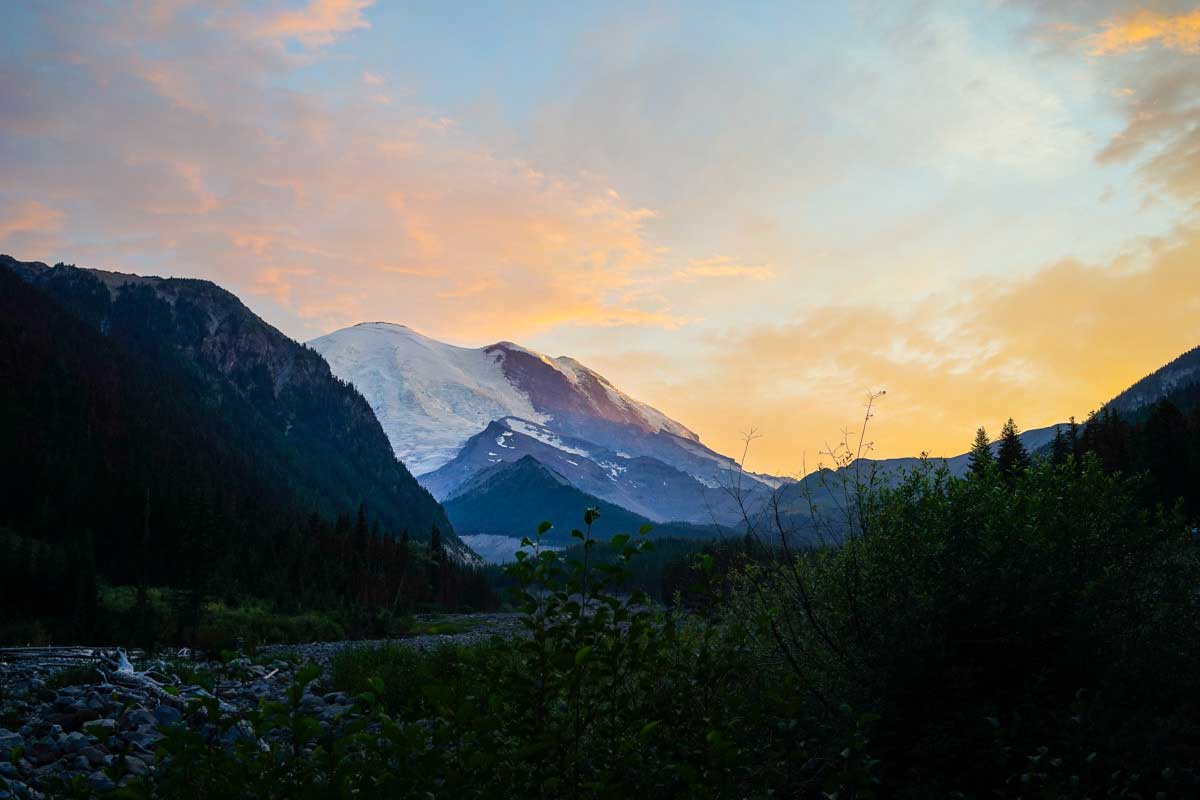
I have been working in the conservation and trail building world since I graduated from college. And, at times, I have experienced overwhelming sexism. As a crew leader for a number of different conservation corps I have had male agency contacts look straight through me, searching my crew for the biggest man, someone who they think looks the part of the crew leader. I have registered the shock on their face when I introduce myself as the one in charge. At one point, it took three days and fixing some guy’s chainsaw before a crew of sawyers from Canyon De Chelly National Monument would even speak to me. One could hardly blame me for being intense, putting on a hard tough face, and overcompensating. These techniques are employed by so many women in male-dominated fields. But the woman I was in the field never sat comfortably with the woman I am inside. I am intense, but I am also sensitive, nurturing, and silly. After hardening my heart for so many hours a day to earn the respect of my male colleagues, I would cry in my tent at night just to release some of the pressure.

Compared to my past experiences, my time at Mount Rainier was actually rather progressive. The men we worked with were simply products of a different time and a different set of rules. They were kind and respectful and I saw they were trying. Early on in the project, my male supervisor was having a chat with Claire and me. Mid-sentence he stopped and said, “What would you ladies preferred to be called? I don’t want to call you guys, I know that’s inappropriate, but ladies seems a little demeaning as well…” I was touched by the fact that he would just come right out and ask. In fact, I was impressed, which says a lot about my opinion of the typical male park employee. There weren’t a lot of moments of blatant sexism, instead what I discovered at Mount Rainier was a tradition of masculinity that blew my mind.
 The masculinity became apparent to me, at first, through the stories that were told and passed around. There were so many legends, living and dead, that I couldn’t keep track of them all. This man who risked his life felling more trees than anyone has ever felled in a day, that man who could hike from Sunrise to Carbon River in a couple of hours; masculine leaders that led by example—if you couldn’t cut it you went home. It was made clear to us, every day, over and over again, that above all else the Park Service prized toughness. Every job was a baptism by fire; you were given very little instruction and the goal was to see if you could hack it.
The masculinity became apparent to me, at first, through the stories that were told and passed around. There were so many legends, living and dead, that I couldn’t keep track of them all. This man who risked his life felling more trees than anyone has ever felled in a day, that man who could hike from Sunrise to Carbon River in a couple of hours; masculine leaders that led by example—if you couldn’t cut it you went home. It was made clear to us, every day, over and over again, that above all else the Park Service prized toughness. Every job was a baptism by fire; you were given very little instruction and the goal was to see if you could hack it.
Even though the Park Service would never condone it, it seemed the only way you became someone was by doing something impressive and risky. If you hadn’t tossed your chainsaw in the air while cutting through a blowdown, or dodged a careening boulder that broke free of the griphoist, you weren’t worthy of the Park Service uniform, and you definitely wouldn’t be remembered. These men were passionate, confident, powerful, and determined. These were stories passed down for generations. Anyone who has read about the beginnings of the Forest Service and Park Service knows that the portrayal of men there in the glory days were men of brawn. They were the rowdiest, wildest men: sleeping under the stars, getting in fights in the bunk houses, battling fires, and causing women to swoon. The men we worked with at Mount Rainier were always yearning for those old begotten days, when things were better, when there were less rules, when they could do what they wanted. I took all this to mean: when there weren’t any women around.

There had been women, too. The women they had worked with in the past, especially those who had supervised them—well—there was very little good that could be said about them. They never lasted, they always moved on, they were hard to work with, and they just weren’t right. A man’s wife was a different story, I heard many tales of the sweetest women, so supportive and wonderful, but they were rarely women that worked for Mount Rainier, and they certainly weren’t women that were in charge of men. While the male legends were passionate, confident, powerful, and determined, these past women were too… what’s the word? Intense.
 Mount Rainier National Park, as an entity, struggles with efficiency, a struggle it seems to be losing to bureaucracy. It functions, but often by such convoluted means, that outcomes are slow and frustrating. Did you know that for the whole month of October no one in the park can purchase anything because the accounting office shuts down to do that year’s books? Or, that you have to log so many hours a month training in order to participate in search and rescue, or help out with a helicopter drop? Which makes sense, except that the trainings are four hours away, on the other side of the mountain, and if one attended all of them they would get very little actual work done. In the morning, our crew would often have to wait two hours before we could start working because someone had an online assessment, or seminar, they had to complete before we could begin. Having only worked at Mount Rainier I can only speak to what I saw there, but I have heard similar stories from other parks and from people who have worked for the Forest Service. Much to my dismay I have read a couple of arguments that the cause of all this inefficiency is women. The argument that stands out is a book written by Christopher Burchfield called The Tinder Box: How Politically Correct Ideology Destroyed the Forest Service. His basic theory is that as equal opportunity laws began forcing the Forest Service to employ women in the 1980s, the Forest Service became more concerned with sexual harassment trainings and egalitarian quotas than the land it was supposed to be stewarding and managing. Basically, everything went downhill from there, not to mention the fact that, according to him, women just suck at manual labor.
Mount Rainier National Park, as an entity, struggles with efficiency, a struggle it seems to be losing to bureaucracy. It functions, but often by such convoluted means, that outcomes are slow and frustrating. Did you know that for the whole month of October no one in the park can purchase anything because the accounting office shuts down to do that year’s books? Or, that you have to log so many hours a month training in order to participate in search and rescue, or help out with a helicopter drop? Which makes sense, except that the trainings are four hours away, on the other side of the mountain, and if one attended all of them they would get very little actual work done. In the morning, our crew would often have to wait two hours before we could start working because someone had an online assessment, or seminar, they had to complete before we could begin. Having only worked at Mount Rainier I can only speak to what I saw there, but I have heard similar stories from other parks and from people who have worked for the Forest Service. Much to my dismay I have read a couple of arguments that the cause of all this inefficiency is women. The argument that stands out is a book written by Christopher Burchfield called The Tinder Box: How Politically Correct Ideology Destroyed the Forest Service. His basic theory is that as equal opportunity laws began forcing the Forest Service to employ women in the 1980s, the Forest Service became more concerned with sexual harassment trainings and egalitarian quotas than the land it was supposed to be stewarding and managing. Basically, everything went downhill from there, not to mention the fact that, according to him, women just suck at manual labor.
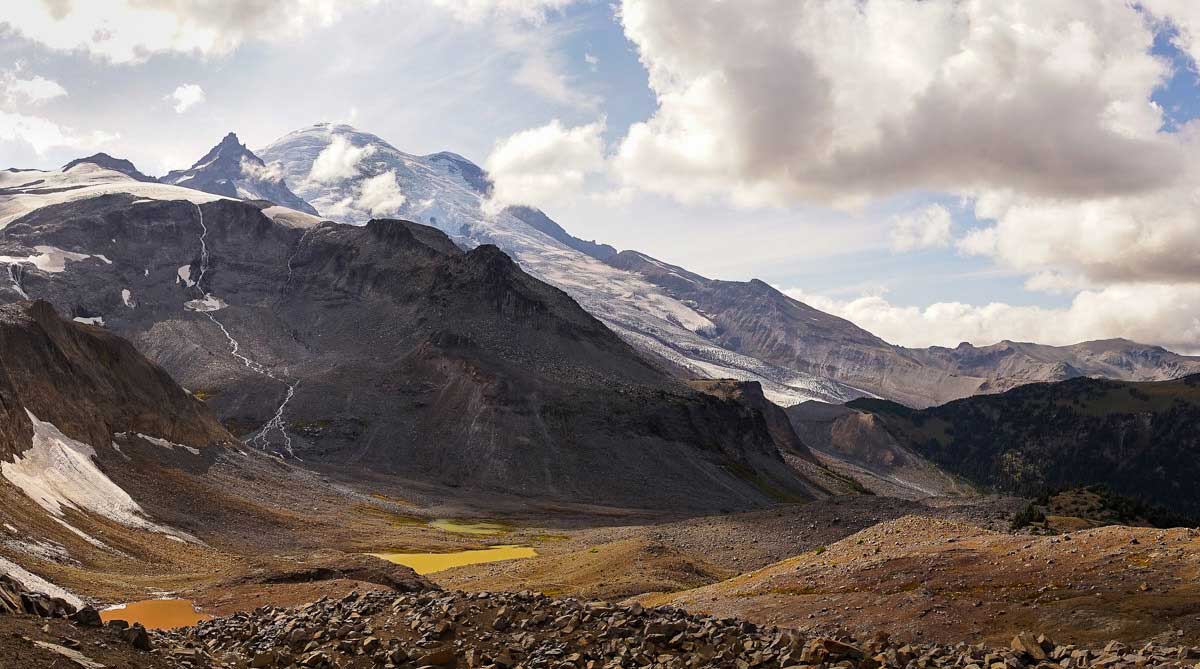
As a woman who has worked manual labor jobs for the past couple of years, I will happily concede that I am not always as strong as my male cohorts. But I have yet to find myself in a situation where I couldn’t accomplish my job. On top of that, I am thoroughly convinced that, while my male counterparts are able to muscle through situations that would break my back, I am often uniquely positioned to reassess and come up with a better plan. We are always saying work smarter, not harder, but in my experience it is actually women who are living this mantra.
 This is not just conjecture, I have worked with a lot of women. When I was working in Arizona a woman ran the chainsaw shop and, right after I left, one of my best female friends was promoted to join her. When we were divvying up crews at Earthcorps it became clear that one crew would be majority female, which I immediately volunteered to lead . Almost all of my supervisors at Earthcorps were incredible women, full of tenacity and spunk, pulling goals from a land of dreams and forcing them into reality. The women I have had on my crews never settle for the status quo, they are always thinking of new ways to accomplish, push harder, move forward. They are empathetic, frustrated by inefficiency, thirsty for progress. Claire, who I went to Mount Rainier with, is the most open, thoughtful, inquisitive, caring person I have ever met. She is a leader of epic proportions, not because she forces herself into that role but because people gladly step into line behind her. These are the women I have worked with and they are not pining for the past, because in the past things were not great for women. These women are looking to the future.
This is not just conjecture, I have worked with a lot of women. When I was working in Arizona a woman ran the chainsaw shop and, right after I left, one of my best female friends was promoted to join her. When we were divvying up crews at Earthcorps it became clear that one crew would be majority female, which I immediately volunteered to lead . Almost all of my supervisors at Earthcorps were incredible women, full of tenacity and spunk, pulling goals from a land of dreams and forcing them into reality. The women I have had on my crews never settle for the status quo, they are always thinking of new ways to accomplish, push harder, move forward. They are empathetic, frustrated by inefficiency, thirsty for progress. Claire, who I went to Mount Rainier with, is the most open, thoughtful, inquisitive, caring person I have ever met. She is a leader of epic proportions, not because she forces herself into that role but because people gladly step into line behind her. These are the women I have worked with and they are not pining for the past, because in the past things were not great for women. These women are looking to the future.
When it comes to the inefficiencies I saw at Mount Rainier National Park, I don’t think the solution is to go back to the way things once were but to move forward. I can’t help but think that what is needed is new blood, creative minds, growth, change, and innovation. But working up the ladder from within seems to be the only way to get anywhere in the Park Service and that process can take years. And those who have worked there before, or spent years working for other governmental sectors, have massive amounts of privilege and preference. Veterans, for example, receive some of the highest preferential treatment when it comes to hiring, supporting my theory that the Park Service prefers employees that are unimaginably hardy and also used to toeing the line. Combine all those years required for upward mobility with the “Are you tough enough to hack it?” attitude and I can see why very few people who approach problems differently, and have different theories about leadership, stick around. They flee to nonprofits and startups, companies and organizations that are inherently progressive, and they use their talents for good. But don’t our National Parks deserve the best?

For my last week of work at Mount Rainier, we headed into the backcountry to dig out drains and brush the trail corridor. The bridge was finished at that point, strong enough to support the excavator we drove over it multiple times, and we had completed the project with a beautiful hand-split railing. Out in the backcountry that last week the views were gorgeous enough to overshadow the stories that rained down on me of all the strong men that had come before. We took a break from trail work one day to hike cross-country up to Curtis Ridge, where we sat quietly under Willis Wall, the creaking of the glacier finally silencing the steady stream of nostalgia. I love that mountain. I want it to have the most amazing Park Service it can have, the most forward-thinking, efficient, hardworking, free, wild, appreciative, nurturing Park Service possible. That is why, as we move forward into the future—and we are moving forward—I think we should remember everything that came before. We should listen to their stories, both as inspiration and cautionary tales, and then we should begin to write our own.

Lindsey Elise is an outdoors woman who shares her and her fiancé, Kyle’s lessons learned in the outdoors via their website, “Tandem Trekking“. She and Kyle believe the true adventure begins at the end of your comfort zone and help people get equipped for that journey. You can follow along her journey through the platforms below—
Woman belong in the kitchen.